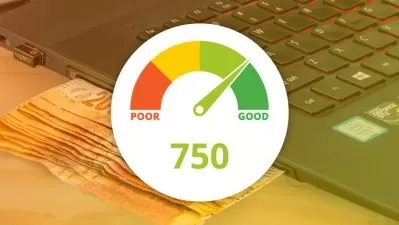Applying IFRS - IAS 21 The Effects of Changes in FX Rates
Judith Leung CA
1:21:12
Description
Understand and practically apply IAS 21 in practice
What You'll Learn?
- Apply the requirements in IAS 21 and determine the functional currency of an entity
- Use the correct exchange rates to record foreign currency transactions
- Use the correct exchange rates to translate financial statements into the presentation currency
- Correctly translate foreign operations and deal with intragroup monetary items
Who is this for?
More details
DescriptionAccess high quality financial accounting traning by an IFRSÂ expert who has extensive experience in preparing IFRSÂ training for a large global accounting firm.
The aim of each IFRS Learning Academy course is to bring you the theory (i.e. technical requirements in the standard) in an easy to understand and engaging manner as well as sharing many real life examples from practice. Each IFRS Learning Academy course breaks down the technical jargon and language in the standard through the use of diagrams and plain English. It therefore is an excellent course and resource for both accounting students and practitioners. The highly practical course makes it relevant for both accounting students as well as accountants and auditors in practice.
This course provides you with an indepth and solid understanding of the theory as well as the practical application of IAS 21 The Effects of Changes in Foreign Exchange Rates. The course contains, lectures, worked examples, practice questions, frequently asked questions and practice aids.
IAS 21 sets out how to include foreign currency transactions and foreign operations in an entity's financial statements and how to translate the financial statements into a presentation currency.
The principal issues are:
Which exchange rate(s) to use; and
How to report exchange rate changes in the financial statements.
The course addresses practical Frequently Asked Questions:
Can an entity change its functional currency?
Can the functional currency of the parent be different from the functional currency of a subsidiary?
What is the functional currency of a SPV with no active operations?
Will an impairment loss always arise in the functional currency if there has been an impairment loss on a foreign currency asset ?
What are some examples of assets where the FX gain or loss are recognised in OCI and not profit or loss?
Why are exchange differences from translation recognised in OCI and not P/L?
What types of monetary items form part of a reporting entity’s net investment in a foreign operation?
What happens to the amount recognised in OCI when a reporting entity sells the foreign operation? Does the cumulative FX movements remain in OCI?
There is also a short bonus course on IFRIC 22 Foreign Currency Transactions and Advance Consideration.
Who this course is for:
- Accountants
- Financial Controllers
- Financial Accountants
- Financial Auditors
- Chief Financial Officers
- Accounting students learning IFRS
- Qualified accountants preparing financial statements under IFRS
Access high quality financial accounting traning by an IFRSÂ expert who has extensive experience in preparing IFRSÂ training for a large global accounting firm.
The aim of each IFRS Learning Academy course is to bring you the theory (i.e. technical requirements in the standard) in an easy to understand and engaging manner as well as sharing many real life examples from practice. Each IFRS Learning Academy course breaks down the technical jargon and language in the standard through the use of diagrams and plain English. It therefore is an excellent course and resource for both accounting students and practitioners. The highly practical course makes it relevant for both accounting students as well as accountants and auditors in practice.
This course provides you with an indepth and solid understanding of the theory as well as the practical application of IAS 21 The Effects of Changes in Foreign Exchange Rates. The course contains, lectures, worked examples, practice questions, frequently asked questions and practice aids.
IAS 21 sets out how to include foreign currency transactions and foreign operations in an entity's financial statements and how to translate the financial statements into a presentation currency.
The principal issues are:
Which exchange rate(s) to use; and
How to report exchange rate changes in the financial statements.
The course addresses practical Frequently Asked Questions:
Can an entity change its functional currency?
Can the functional currency of the parent be different from the functional currency of a subsidiary?
What is the functional currency of a SPV with no active operations?
Will an impairment loss always arise in the functional currency if there has been an impairment loss on a foreign currency asset ?
What are some examples of assets where the FX gain or loss are recognised in OCI and not profit or loss?
Why are exchange differences from translation recognised in OCI and not P/L?
What types of monetary items form part of a reporting entity’s net investment in a foreign operation?
What happens to the amount recognised in OCI when a reporting entity sells the foreign operation? Does the cumulative FX movements remain in OCI?
There is also a short bonus course on IFRIC 22 Foreign Currency Transactions and Advance Consideration.
Who this course is for:
- Accountants
- Financial Controllers
- Financial Accountants
- Financial Auditors
- Chief Financial Officers
- Accounting students learning IFRS
- Qualified accountants preparing financial statements under IFRS
User Reviews
Rating
Judith Leung CA
Instructor's Courses
Udemy
View courses Udemy- language english
- Training sessions 11
- duration 1:21:12
- Release Date 2023/02/06











